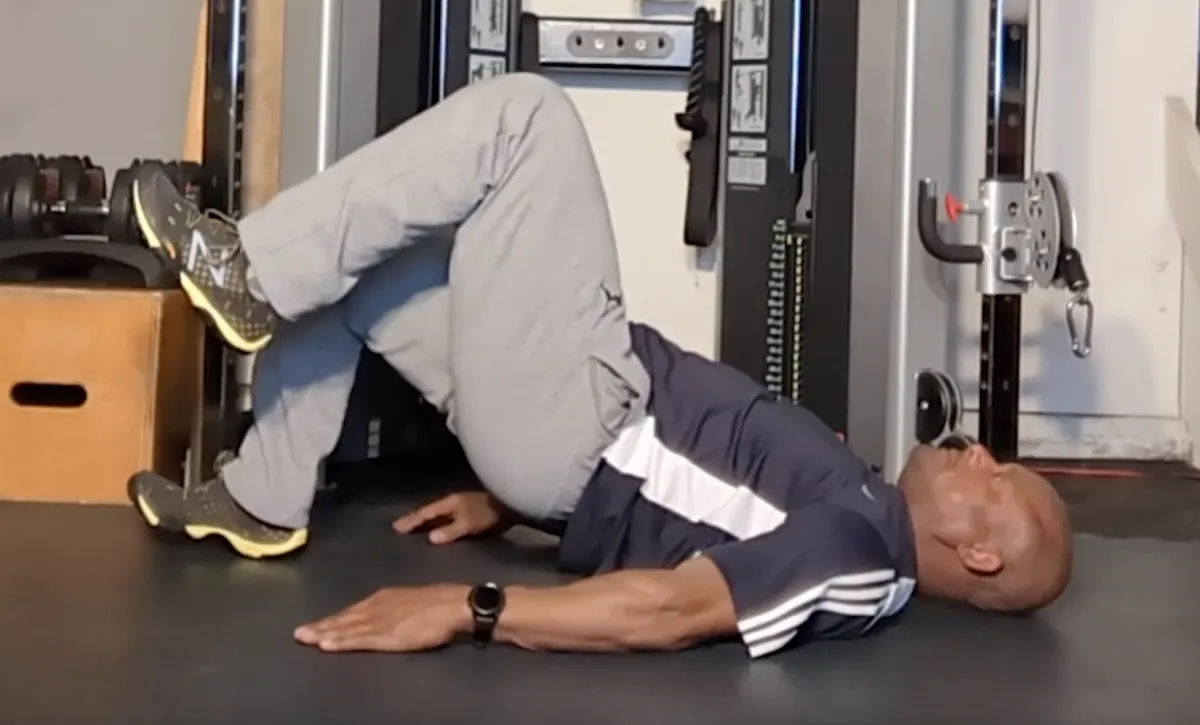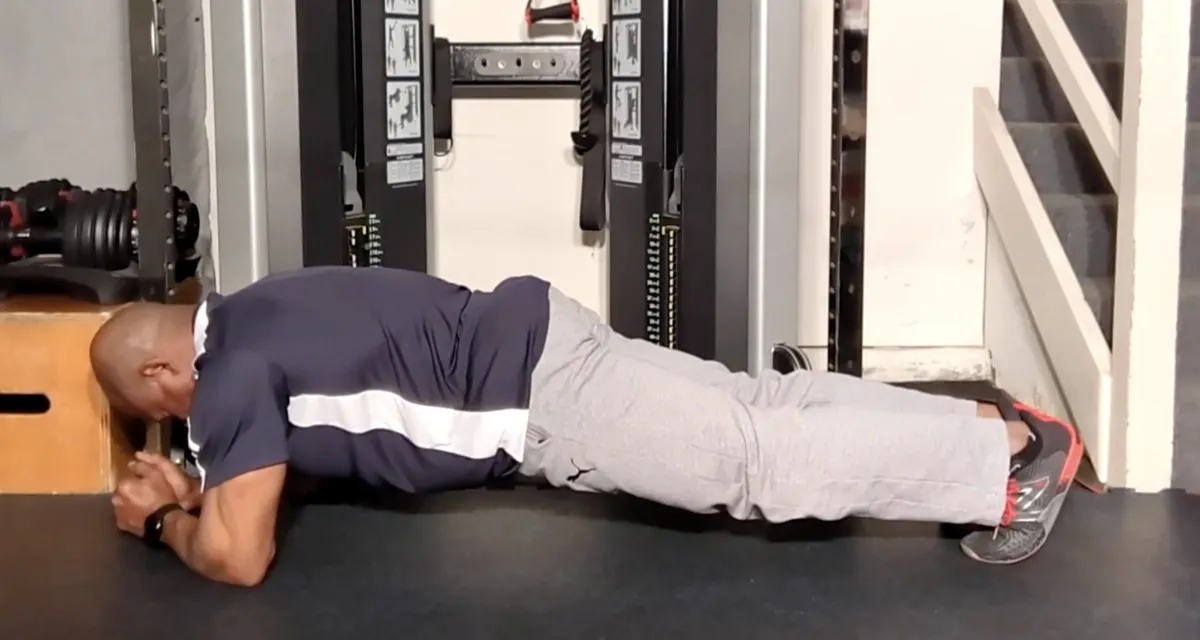
RESOURCES

The Link Between Weak Hip and Knee Pain
If you’ve been struggling with persistent knee pain, the real issue might not be your knees at all. Weak hips are often a hidden culprit behind knee discomfort, and strengthening them can be the key to lasting relief. Let’s break down the connection between hip strength and knee pain, common signs of weakness, and effective solutions to help you move pain-free.

How Weak Hips Cause Knee Pain
The hips and knees work together as part of a chain, meaning when one isn’t functioning properly, it places extra strain on the other. Weakness in the muscles around the hips—especially the glutes—can cause misalignment in the lower body, leading to increased stress on the knees. Here’s how:
Poor Knee Alignment: The hip muscles, particularly the gluteus medius, help keep your knees properly aligned when you walk, run, or squat. When these muscles are weak, your knees may cave inward (a condition called knee valgus), increasing the risk of pain and injury.
Increased Joint Stress: Without strong hips to support movement, the knee joint compensates by absorbing more impact. Over time, this added stress leads to discomfort, inflammation, and even long-term damage.
Tight or Overworked Muscles: When hip muscles are weak, surrounding muscles like the quadriceps and IT band (a connective tissue along the outer thigh) often become overworked. This imbalance leads to tightness, pulling on the knee and causing pain.
Limited Mobility: Weak hips can lead to stiffness and reduced flexibility, making movement less fluid and increasing strain on the knees, especially during activities like climbing stairs or squatting.
Signs That Weak Hips Might Be Causing Your Knee Pain
If you’re experiencing knee pain but aren’t sure whether your hips are to blame, here are some signs to watch for:
Pain that worsens after prolonged sitting – Sitting for long periods, especially in awkward positions, can lead to tight and weak hip muscles, increasing knee discomfort.
Difficulty with single-leg movements – Struggling with balance or experiencing knee pain during lunges, step-ups, or running could indicate hip instability.
Stiffness in the hips and lower back – A lack of mobility in these areas often means the knees are compensating for reduced movement.
Knees that turn inward during squats or walking – If your knees naturally collapse inward, it’s a strong sign that your hip muscles are not providing enough support.

How to Strengthen Your Hips and Reduce Knee Pain
Improving hip strength and mobility is one of the most effective ways to relieve knee pain and prevent future issues. Here’s what you can do:
1. Focus on Hip-Strengthening Exercises
Strengthening the muscles around your hips—especially the glutes—helps support your knees and improve overall alignment. Try incorporating these exercises into your routine:
Glute Bridges – Lie on your back with your knees bent and feet flat on the floor. Push through your heels to lift your hips toward the ceiling, squeezing your glutes at the top.
Side-Lying Leg Raises – Lie on your side with legs stacked. Lift your top leg without rotating your hips, engaging your glute muscles.
Clamshells – Similar to side-lying leg raises, but with knees bent. Open and close your knees like a clamshell while keeping your feet together.
Step-Ups – Step onto a sturdy platform with one foot, then bring the other foot up before stepping back down. This mimics real-life movement patterns and strengthens key muscles.
2. Stretch and Foam Roll Regularly
Tight muscles can exacerbate knee pain, so incorporating foam rolling and stretching is essential. Focus on these areas:
Hip Flexors – Prolonged sitting tightens the front of your hips, pulling your pelvis forward and increasing stress on your knees. Stretching the hip flexors can help restore balance.
Glutes and Piriformis – Foam rolling your glutes and performing seated figure-four stretches can relieve tension and improve mobility.
Quads and IT Band – Foam rolling these areas helps reduce tightness that can contribute to knee pain.

3. Be Mindful of Your Sitting and Sleeping Positions
Avoid prolonged sitting in awkward positions – Sitting cross-legged or with your legs tucked under can weaken and tighten muscles over time. Sit with both feet flat on the floor and take breaks to stand and move.
Support your knees while sleeping – If you’re a side sleeper, placing a pillow between your knees helps keep your hips aligned, reducing strain on the knees.
4. Stay Active with Low-Impact Movements
Maintaining an active lifestyle prevents stiffness and promotes better joint health. Activities like swimming, cycling, and walking can keep the knees moving without excessive stress.
Take Control of Your Knee Health
If weak hips are causing your knee pain, strengthening and stretching can make a significant difference. By incorporating hip-focused exercises, improving posture, and staying consistent with mobility work, you can reduce knee discomfort and move with greater ease. If pain persists, consider consulting a professional to assess your movement patterns and provide personalized recommendations.
Your knees and hips work together—give them the support they need, and you’ll feel the difference!
Please remember, the quality of your life is directly proportional to how well your body functions!
Sheila Mann's Testimonial
Sheila Mann doing Suspension Strap Push-ups on an elevated Single Leg.
Just another Saturday Workout Part 2
Spray Tan Fitness
Dreams or Goals
Intro to Self-Myofascial Release
Self Massage using the Energy F X Tube (Upper Body)
Self-Massage for Lower Body using Energy F X Tube (IT Band , Glutes)
Level 3
This is our advance level. In this level you will be asked to increase the challenges to your strength, balance and to some degree, your conditioning. We continue to focus on the major joints of the body (hips, shoulder, and knees) with the added challenge of resistance. This level also includes the added challenge of coordination, as many movements require the integrated movement of both upper and lower body.

Level 4
This is our premium level. In this level you will be asked to significantly challenge your body through increased demands on your functional core strength in movements that will significantly challenge your balance and strength simultaneously. Here we will ask you to begin to optimize your balance, core activation, and improved range of motion in a functional aspect – integrated movement of both upper and lower body, but at a higher level of accountability.

